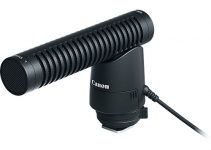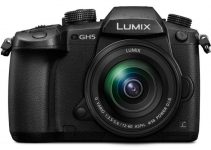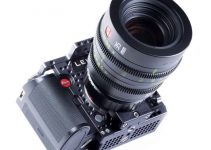A special fact about the spectacular image sensors that power the ALEXA, ALEXA LF, and the ALEXA 65 is that they are all exactly the same. Despite the size difference from Super 35, Full Frame, and 65mm, the ALEV III sensor is the only one that is used in all three cameras.
That is because the ALEV III is so good that to make a larger format camera, all ARRI effectively had to do was put more of the same sensors together. The ALEXA has 1 ALEV III sensor, the Alexa LF effectively have 2 ALEV III sensors stitched together, and the ALEXA 65 has 3 of them! They’re all based on the same sensor, and the photosites are the exact same, there are just more of them to accommodate the larger surface area.
The 6.5K ALEXA 65 has the largest digital motion picture sensor on the market, it is even bigger than 65mm film stock. Regardless of the sensor size, the image quality and color SHOULD perfectly match its baby brother, the 3.4K ALEXA Mini.
This comparison is simply to illustrate the amazing difference sensor sizes have on the composition and look of our footage, but you’ll notice a significant bump in quality, low-light, and noise as well. And while you watch this footage, we can all drool over how fantastic of an image you can capture using a $98,000 camera.
The Testing Rig
I’m completely fascinated with the level of quality and care that went into this test. Manuel Luebbers went the extra mile to use a beam splitter, and exactly match the focal length of each lens for every single shot just to make sure that the shots he is evaluating were a 100% match.
It might seem like a lot, but doing it this way leaves absolutely no question that what you are seeing from both cameras is completely identical, leaving you to evaluate the crop factor, depth of field, distortion, noise, and resolution all without distraction.
Crop Factor
This example illustrates the crop difference between these two cameras when shooting with the exact same lens, a DNA Prime 45mm.
The Alexa Mini has a crop factor of 1.27 compared to LF/ Full Frame, whereas the Alexa 65 has a crop factor of 0.70.
To match the cameras, you must multiply the crop factor by the focal length; therefore, In order to get the exact same composition, you would use a 18mm lens on the ALEXA Mini.
Depth of Field
Since the image plane is larger and the image circle projected by the lens is also bigger, the ALEXA 65 has a much shallower depth of field compared to the Alexa Mini.
Most of us know this from shooting with an FS7, and using an A7S II (or III) as a b-camera. The images from the full-frame camera is a lot more cinematic looking, but that extra blur comes at the cost of a tougher focus pull.
In order to equal things up, but ALEXA 65 is set to a T 5.6 which matches almost perfectly to the ALEXA Mini at T 2.8.
Perspective and Distortion
We’re all taught and we have all accepted that large format cameras change the perspective and the rendering of the scene. With larger sensors, we use different focal lengths to achieve the same perspective but as we can see with these examples, that isn’t actually the case.
The 18mm lens on the ALEXA Mini is rendering the exact same image as the 35mm lens on the ALEXA 65. The perspective of the scene could only change if you repositioned the camera. There is no difference in the relation between the actress and the room behind her.
The relationship of the objects to the space are dependent on the perspective of the viewer, which is in this case the camera. This is even apparent in the portrait shot – he has corrected for the sensor size by selecting a wider lens and therefore, the shots are almost entirely identical (aside from some shallower depth of field from the 65).
Noise Performance
The noise levels from the ALEXA 65 are lower than those of the ALEXA Mini simply because the 65 has more photosites – specifically about 3x as many in the same density. This means that when the final image is scaled down onto our screens any noise that would be present in the Mini is 1/3rd the size on the 65.
This can be a tough one to spot since the ALEXA’s ALEV III sensor contains some very large, very light sensitive photosites and handles noise exceptionally well already.
Since we’re seeing an image that is being rendered by the same, exact photosites just on a larger surface area in greater numbers, the noise that sensor produces will appear that much smaller. If you were to examine these images 1:1, at 100% to scale, that noise would be identical.
However, the added perceived reduction in noise and increased low-light performance is a definite shot in the arm, and the images from the 65 are stunning at 3200 ISO. The ALEXA Mini keeps up nicely too.
Resolution
Since the ALEXA 65 and the Mini both effectively use the same sensor (it’s just that the 65’s is on a larger surface area with more photosites), the resolution from the 65 is going to be that much bigger. With a 3.4k resolution from the Mini, and a 6.5k resolution from the 65, its obvious how much sharper the 65 is when zoomed all the way in to 300%.
The Mini’s image is blurry and blocky and the image from the 65 is crisp and perfect.
Conclusion
The ALEXA series of cameras are by far the best in the industry, and if you’re lucky enough to shoot with them – you’ve made it to the major leagues. However, if your drive is just to shoot with larger and larger sensors to improve your cinematography, clearly it won’t help you. You might get a blurrier background, and (in the case of the ALEXA 65) less noise, it won’t actually change the composition of your shots in any unique way.
With camera manufacturers pushing larger sensors into the market, I often wonder what the point really is to shooting with them. They’re harder to focus, the lenses are heavier, and more importantly, some of my favorite movies were shot in Super 16 and that didn’t seem to affect the story.
[source: manuelluebbers]
B&H Order Links:
Disclaimer: As an Amazon Associate partner and participant in B&H and other affiliate programmes, we earn a small comission from each purchase made through the affiliate links listed above at no additional cost to you.




